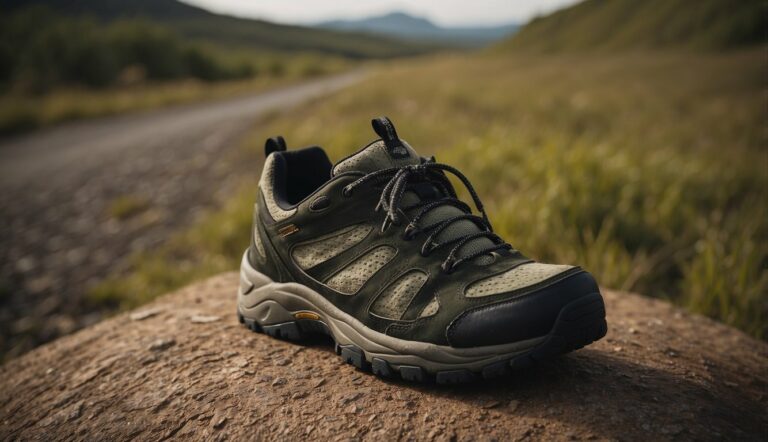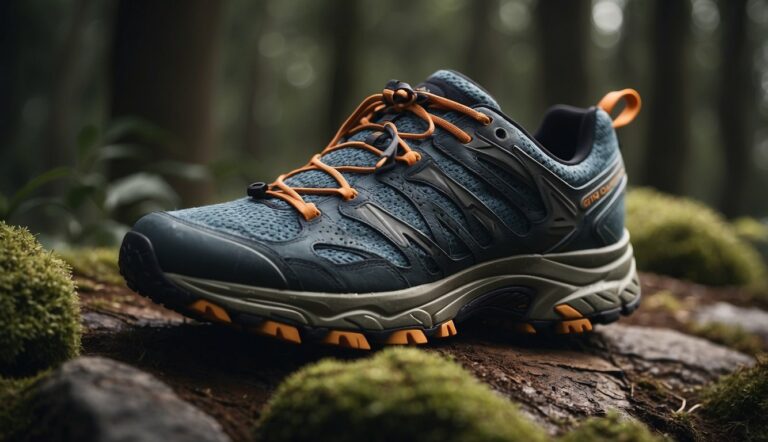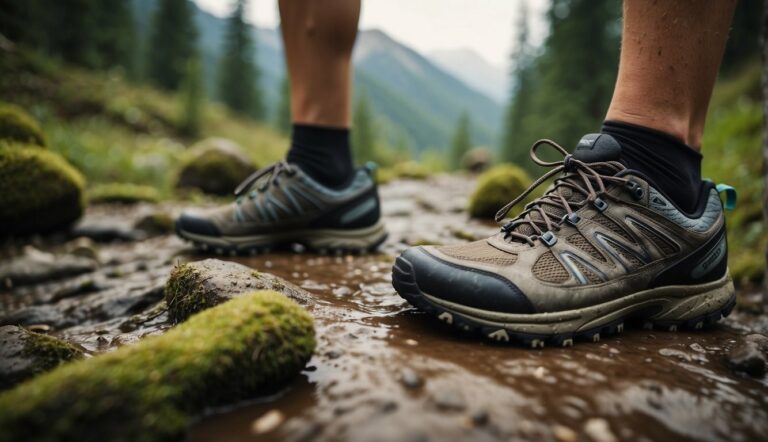Should I Choose Laces or Slip-Ons for Trail Running? Factors to Consider for Optimal Performance
When it comes to trail running, the choice between laces and slip-ons is more than just a matter of convenience. As an experienced trail runner and UESCA certified running coach, I’ve found that the type of shoe closure can affect both performance and comfort on the trails. It’s important to consider your individual needs and the type of terrain you’ll be tackling.
Slip-on trail running shoes, like those from On Cloud with their speed lacing system, offer quick transitions and a consistent fit without the hassle of tying laces. They’re particularly useful for runners who value time efficiency or have difficulty with fine motor skills. On the other hand, traditional laces provide a customizable fit that can be adjusted for precise comfort and support, which can be crucial on uneven and demanding terrains.
In choosing the right trail running shoes, questions often arise about which option will provide the best experience. While slip-ons can be a great choice for their convenience and ease of use, traditional laces allow for fine-tuned adjustments that can respond to the dynamic conditions of trail running. It’s essential to weigh these factors against your personal preferences and the specifics of the trails you plan to explore.
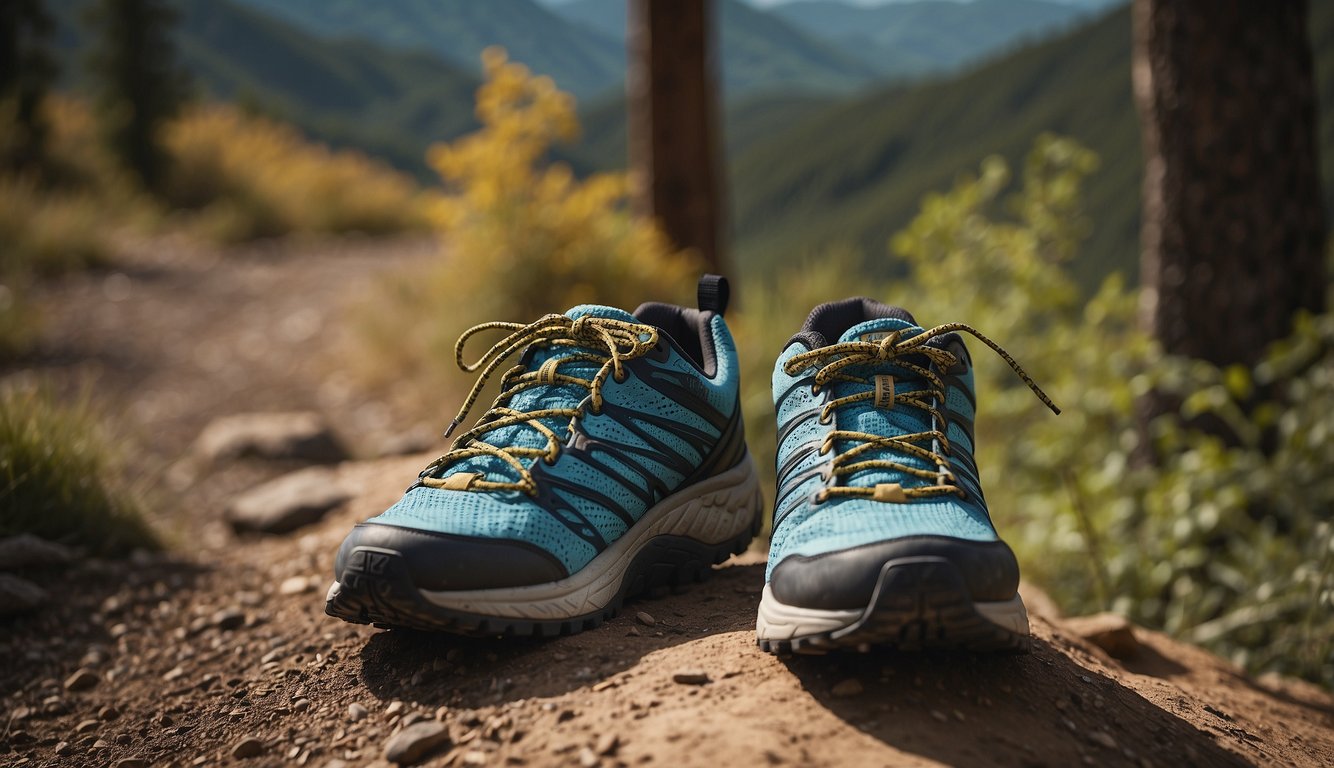
Determining Your Trail Running Needs
When choosing between laces and slip-ons for trail running, it’s important to consider a few key factors: the terrain, your foot’s shape, and the need for stability. I recommend laces for technical terrain; they offer a precision fit that maintains stability on uneven trails, which is crucial to avoid ankle rolling or sliding. With slip-ons, the fit may be too generic to tackle challenging ground.
Key Considerations
- Terrain: If your trails feature rocks, roots, and steep grades, opt for laced shoes for better adjustability.
- Stability: Laces provide a secure fit that can be tightened or loosened as needed, enhancing stability on uneven trails.
- Tread: Look at the sole’s tread. For more rugged terrain, you need deeper lugs for grip. This is often found in laced trail running shoes rather than slip-ons.
Lacing Techniques for Trail Runners:
- Standard lacing for a secure base
- Heel-lock lacing to prevent slipping
In summary, I would suggest lacing systems for runners seeking a customized fit to handle rugged, unpredictable paths. This makes laces an excellent choice for trail running shoes where control and precision are key.
Remember that the perfect fit will differ based on individual needs, so it might take a few tries to get it right. Slip-on trail running shoes can suffice for less technical and more predictable surfaces where convenience and quick wear are prioritized.
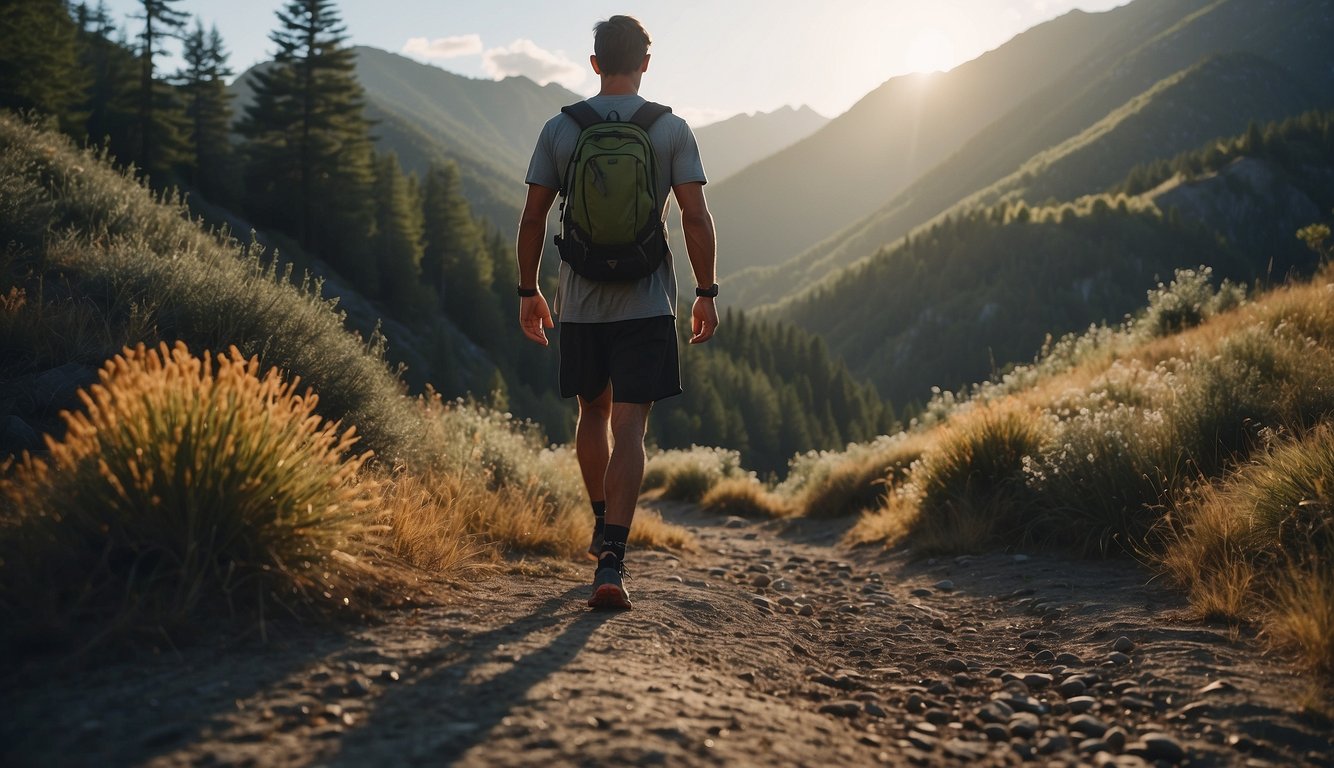
Lace-Up Vs. Slip-On Trail Shoes: An Overview
When deciding between lace-up or slip-on trail running shoes, each offers distinct advantages. Lace-ups are renowned for their secure fit; you can adjust the laces for a tailored fit around your foot, accommodating for changes like swelling during long runs. Some lace-up models even feature lock laces, which are elastic and help maintain an even tension across the foot without the need for constant retying.
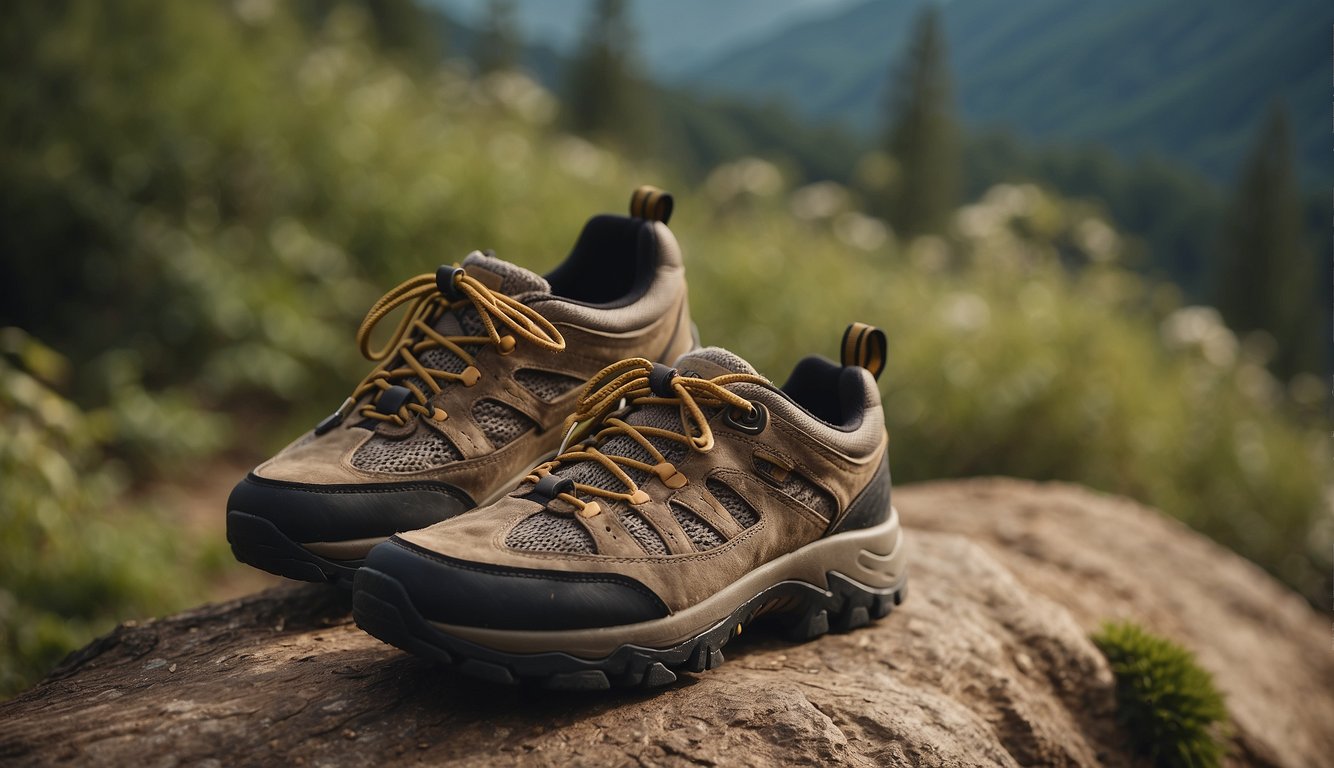
Slip-on trail shoes are all about convenience and ease of use. They are ideal for runners who prioritize quick on-and-off or seek a cleaner look without loose laces. However, the downside can be a less customizable fit, which might lead to slippage and reduced stability on uneven terrain.
Here is a quick comparison:
| Feature | Lace-Up Shoes | Slip-On Shoes |
|---|---|---|
| Fit | Adjustable, Secure | Less Adjustable |
| Convenience | Takes time to lace | Quick to put on |
| Style Options | Varied, including lock laces | Sleek, often with fewer visible details |
| Security | Tightened to preference | Dependent on shoe’s design |
Your choice might also reflect your personal style. Some runners prefer the classic look and feel of laces, while others opt for the modern aesthetic of slip-ons.
In my experience, for rigorous trail running, the adjustable and secure fit of lace-ups often outweighs the quick convenience of slip-ons, ensuring comfort and reducing the risk of injury. Remember to consider the terrain you’ll be running on and how the shoe’s fit will affect your performance.
Anatomy of Trail Running Shoes
Selecting the right trail running shoes is essential for comfort and performance. Key aspects like fit, stability, and adaptability to terrain play pivotal roles in this choice.
Importance of Fit and Size
My experience emphasizes that a precise fit is the foremost priority. Trail running shoes should have a snug, yet comfortable toe box to avoid discomfort and allow for toe splay. Ensure the fit is neither too tight nor too loose; this minimizes the risk of blisters and supports natural foot movement.
- Size: True to your foot’s length and width.
- Custom Fit: Often achievable through lacing adjustments.
Stability and Support Features
In trail shoes, stability reigns supreme. A secure fit around the ankle and midsole helps prevent ankle rolls and provides support through uneven terrain. The upper part of the shoe should offer both flexibility and stability to adapt to your foot’s movements.
Support Components:
- Upper: Balances breathability with necessary structure.
- Midsole: EVA foam or similar for shock absorption and energy return.
Terrain-Specific Adaptations
Trail shoes must handle varied surfaces. Look for a tough outsole with multidirectional lugs for grip on mud, snow, and loose dirt. Protective features like a rock plate can shield your feet from sharp objects.
Outsole Characteristics:
- Traction: Lugs designed for specific terrain types.
- Protection: Rock plates embedded in the outsole for trail hazards.
Material Considerations
The materials should strike a balance between durability, breathability, and water resistance. While some runners prefer the breathability and quick-drying features of non-waterproof materials, others might opt for waterproof shoes such as those with GORE-TEX liners for wet conditions.
Material Choices:
- Breathable: Allow for air flow, quick drying.
- Waterproof: GORE-TEX or similar membranes for wet trails.
Selecting Shoes For Different Trail Conditions
When choosing between laces or slip-ons for trail running, the specific conditions of the trail you’ll be tackling are paramount. Here’s a straightforward guide to selecting shoes for various trail scenarios.
For technical terrain—which includes rocky paths, sharp turns, and frequent elevation changes—I recommend shoes with secure lacing systems. This ensures precise adjustments to fit, necessary for unpredictable ground.
On mud and snow, slip-ons could potentially lead to a lack of security and stability. Laced shoes with a deep tread and substantial lugs provide better traction and minimize the risk of slipping.
In conditions where you might encounter a lot of sharp rocks, a rock plate integrated into the shoe offers additional protection. Lace-up shoes tend to integrate these features more commonly than slip-ons, giving your feet an extra shield against punctures and bruises.
Below is a quick reference table summarizing the shoe features recommended for various trail conditions:
| Trail Condition | Shoe Feature | Reason |
|---|---|---|
| Technical Terrain | Secure Laces | Enhances fit and precision |
| Mud and Snow | Deep Tread & Lugs | Increases grip and prevents slips |
| Sharp Rocks | Rock Plate | Offers underfoot protection |
My experience has taught me the importance of selecting the right shoe for the right condition. Slip-on shoes might seem convenient, but laced trail running shoes generally provide better technical features and adjustability for the diverse challenges of trail running.
Enhancing Your Trail Shoes With Accessories
When selecting accessories for trail running shoes, my aim is to improve fit, comfort, and performance. Accessories such as elastic laces or specialized lock systems can offer a custom fit, reduce pressure points, and accommodate foot swelling, which often occurs during long runs.
Elastic Laces: Brands like Lock Laces and Xpand provide elastic lacing systems that allow for easy adjustment. These laces can stretch to accommodate feet comfortably, eliminating hot spots and providing consistent compression. The adjustable tension helps in securing the shoe without the need for constant re-tying.
| Brand | Type | Feature |
|---|---|---|
| Lock Laces | Elastic No-Tie | Quick Lock-and-Clip System |
| Xpand | Elastic No-Tie | Zero Memory Elasticity |
| Nathan | Reflective Lock | Visibility and Locking Fit |
Double Eyelet Lock: For a more secure fit, I recommend using this technique by utilizing the extra eyelets at the top of most running shoes. Thread the laces back through the last eyelet to create a loop, then cross the ends, pulling them through the opposite loop before tying. This helps to lock the heel in place and can prevent slippage.
Accessories are an inexpensive way to customize trail running shoes for better performance. By considering elastic laces and employing the double eyelet lock technique, trail runners can enhance their overall experience with a simple upgrade to their gear.
Making The Final Decision: Functionality Meets Style
When choosing trail running shoes, I balance functionality and style to meet the needs of the occasion. Runners often have a collection of shoes, but selecting the right pair for trail running requires a focus on the shoe’s features alongside personal style and budget considerations.
Laces vs. Slip-Ons:
- Laces: Offer adjustability for a snug fit, enhancing stability on uneven terrain. Critical for those who experience variance in foot size due to swelling during runs.
- Slip-Ons: Typically provide quick wearability and convenience. May not offer the same level of precision fit, which can be vital on challenging trails.
Budget and Style:
- Budget matters, but investing in quality ensures durability and safety. Balance cost with features needed for trail running.
- Personal style also plays a role. Shoes are part of your running identity, and there’s value in feeling good about what you wear.
| Shoe Type | Fit Customization | Convenience | Style Considerations |
|---|---|---|---|
| Laced Shoes | High | Moderate | Varied designs |
| Slip-On Shoes | Low to Moderate | High | Sleek, less varied |
My advice is to order shoes well in advance of your trail runs to allow ample time for breaking them in. Always prioritize functionality, but don’t compromise on a style that will make you feel confident on the trails.




